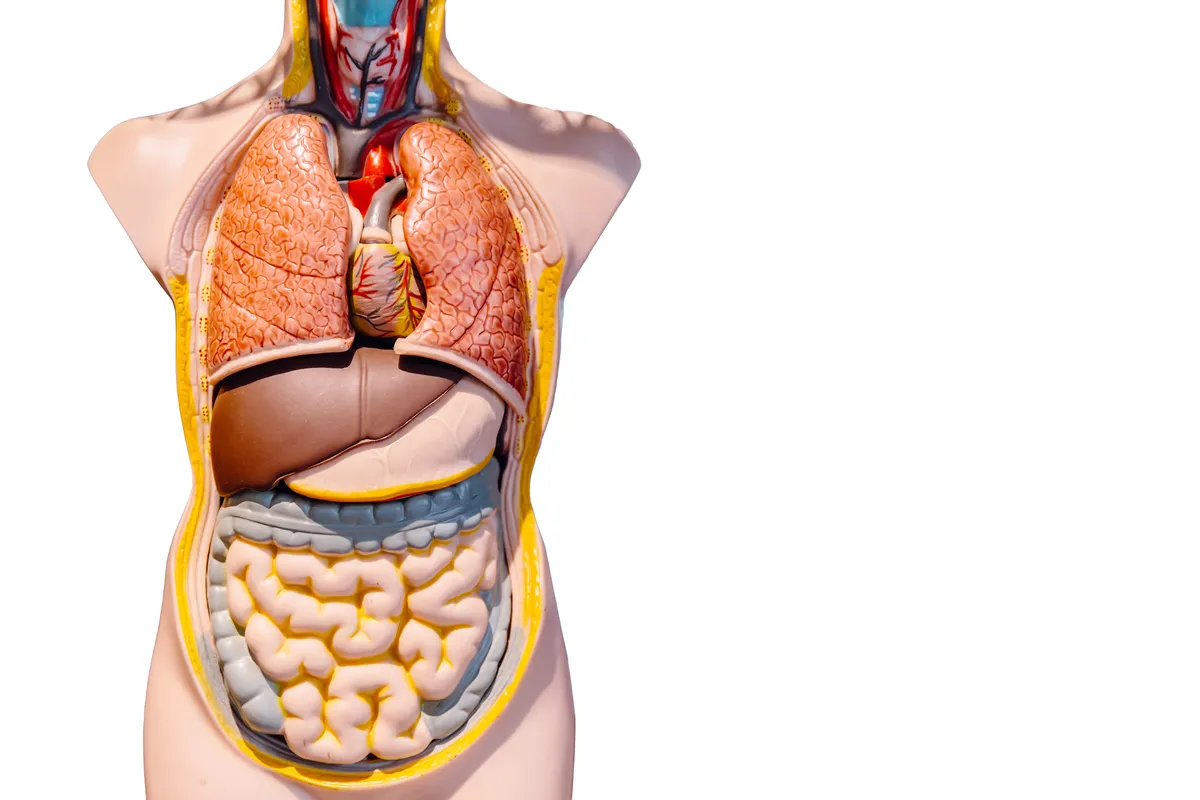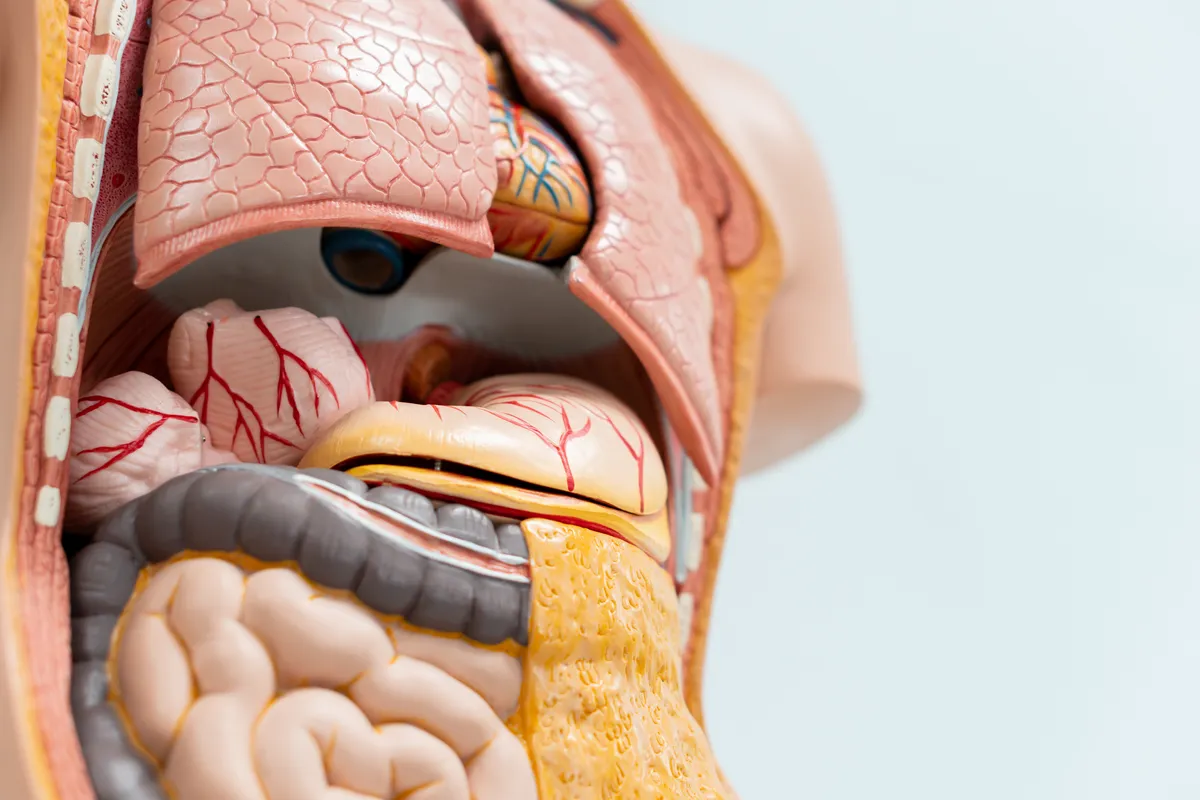6 min read time
Table of Contents

4 Common Internal Injuries Resulting from Car Accidents in Las Vegas, NV
Motor vehicle crashes can cause a variety of injuries; however, one type of car accident injury can be especially dangerous, which is hidden internal damage inside the body that may not present obvious symptoms immediately, but can be severe and even fatal if not properly treated.
Recognizing these injuries early is crucial for timely treatment, recovery, and ensuring you are fully compensated for your injuries and damages.
Rib Fractures and Lung Contusions
A rib fracture caused by a car accident can puncture the lung, causing a contusion that inflames lung tissue and leads to sharp chest pain, shortness of breath, and pneumothorax (collapsed lung), which is a serious condition that occurs when air enters the area between the lung and chest.
Common signs of broken ribs that result in a lung condition in a crash victim include:
- Sharp chest pain when breathing or coughing
- Bluish lips or skin
Traumatic Brain Injury (TBI)
A violent jolt to the head during a car accident, such as hitting the dashboard or colliding with solid objects, can cause the brain to collide with the skull, resulting in concussions or internal brain bleeding.
Common symptoms of traumatic brain injuries, such as persistent headaches, dizziness, memory loss, and mood swings, may surface days after the car accident, so you should always seek medical attention immediately after a car wreck, no matter how you feel.
Organ Damage (Spleen, Liver, Kidneys)
Blunt force from a car accident can crush the spleen, lacerate the liver, or rupture the kidneys, leading to internal bleeding, shock, and long‑term organ dysfunction that requires immediate medical intervention.
Sustaining internal injuries can also threaten vital organs such as the heart, leading to low blood pressure or even organ failure, which can often be fatal without prompt intervention from medical experts.
Spinal Cord Injuries
Spinal cord injuries result from the high-speed impact of car accidents and often lead to paralysis, profound life changes, and permanent disability.
Key symptoms of a spinal cord injury are sudden loss of sensation, severe back pain, and impaired movement.
Understanding Internal Injuries in Car Accidents

Internal injuries are injuries that occur within the body and cannot be seen from the outside.
Understanding what constitutes an internal injury after a car collision is crucial for timely medical care and protecting one's legal rights.
What Constitutes an Internal Injury
An internal injury is damage that occurs inside the body's cavities, lungs, heart, abdomen, or brain, without visible external wounds.
It often goes unnoticed until symptoms appear, making early medical evaluation critical in auto‑accident cases.
Internal injuries arise from three primary trauma mechanisms:
- Blunt force: A direct impact with a dull surface that tears tissue or vessels.
- Decelerating impact: A sudden slowdown that drives organs against the body's walls.
- Penetrating objects: Glass, metal, or a sharp object that breaches internal tissue.
Because the injury is hidden, victims may feel fine initially, yet delayed symptoms such as rapid heart rate or low blood pressure can signal internal injuries caused by major blood vessel damage.
What Are the Symptoms of Internal Injuries After a Car Accident
After a motor vehicle accident, internal injuries may not show obvious signs; however, having awareness of the subtle symptoms is essential to your recovery.
Understanding these early indicators can prompt a timely medical evaluation and protect long‑term health.
Pain and Swelling
A common symptom of internal injuries is physical pain that usually begins in the abdomen, chest, or back and may worsen with movement or breathing.
Also, swelling or bruising that appears suddenly or spreads beyond the impact area signals possible internal bleeding or organ injury.
Nausea and Vomiting
Sudden nausea after a car accident often points to trauma to internal organs or a brain injury.
Vomiting may precede bruising, hinting at internal bleeding that appears later, so you must seek prompt medical care, as untreated vomiting can mask a ruptured spleen or a puncture wound.
Visible Bruising
Visible bruising that appears days after an accident, especially deep purple or large patches, can signal internal bleeding or organ damage beneath the skin.
Even a seemingly minor bruise warrants prompt medical evaluation.
Shock
Shock can quickly develop in an accident victim after a collision. Even if the victim feels fine, look for a racing pulse, sudden dizziness, or clammy skin that feels cold to the touch.
Additionally, weakness, nausea, and fainting are red flags, and if the blood pressure drops or the person feels lightheaded, seek immediate medical help to prevent serious complications and lasting consequences.
Common Causes of Internal Bleeding and Injuries in Auto Accidents
Internal bleeding can arise from a range of forces during a car crash, from sudden deceleration to direct impact with interior components.
Understanding the common causes of internal trauma can help in early detection and treatment.
Blunt Trauma
Blunt trauma occurs when the forces of the car accident push the body against hard surfaces, crushing blood vessels and organs without penetration.
This sudden impact can rupture organs such as the spleen or liver, resulting in internal bleeding.
Common forms of blunt trauma include:
- Seat‑belt compression
- Airbag deployment
- Dashboard or steering‑wheel collision
- Unsecured cargo impact
These forces often damage blood vessels inside the body, including the abdominal aorta and other major blood vessels, leading to severe internal bleeding.
Decelerating Trauma
Rapid deceleration caused by the sudden stopping of the vehicles in a car accident forces the body to stop while internal organs continue moving, creating shear stresses that rupture vessels and organs.
This shearing can tear the spleen, liver, or mesenteric arteries, leading to sudden, often occult, internal hemorrhage.
Even when a seat belt is worn, the forward momentum of the brain against the skull can cause intracranial bleeding, and the same principle applies to thoracic vessels, producing life‑threatening blood loss.
Penetrating Trauma
In car accidents, penetrating trauma occurs when a broken rib or a fragment of glass can puncture organs, creating instant blood loss.
The puncture opens a direct channel for blood to escape into cavities such as the abdomen or thorax, causing rapid hemorrhage that may be missed until professional medical imaging.
Medical Treatment for Internal Injuries

Understanding what medical care to seek is crucial for those facing hidden internal injuries from car crashes.
Immediate Medical Evaluation
Immediately after a collision, seek medical treatment. Even if your symptoms seem mild, internal injuries can be silent; prompt imaging and monitoring prevent severe complications and support future legal claims.
Long‑Term Treatment Options
An accident victim who suffers an internal injury often requires ongoing imaging, physical therapy, and pain management to monitor organ recovery and prevent life-threatening complications.
Damages You Can Seek for Internal Injuries After a Car Wreck
If your car accident caused internal injuries to you or a loved one, various economic and non-economic damages can be sought from a car accident claim.
And when filed by the experienced Las Vegas car accident attorneys at the Rodney Okano Car Accident Lawyer Law Firm, you can be assured a fair settlement.
Compensation for Economic Damages
Economic damages cover medical expenses, lost wages, future earning loss, and property damage.
Documentation such as invoices, pay stubs, and receipts substantiates the monetary loss.
Compensation for Non‑Economic Damages
Non‑economic damages cover pain, suffering, emotional distress, and loss of enjoyment.
These types of damages are subjective and often require expert testimony, medical records, and personal accounts to prove to the insurance company or court.
Get the Settlement You Deserve Today
An experienced Las Vegas car accident attorney from the Rodney Okano Car Accident Lawyer Law Firm is prepared to fight for the rights and financial settlement for all Nevada car accident victims who sustain internal injuries in motor vehicle accidents.
Schedule a free consultation with a Las Vegas personal injury attorney from our law firm today to receive a free case review, in which you can learn about your legal options and the value of your personal injury claim.
Obtain the Compensation You're Entitled To
Contact Us Today
Rodney Okano Car Accident Lawyer is a Las Vegas personal injury law firm with over 20 years of experience helping clients obtain maximum compensation following injuries from accidents such as car crashes, worksite injuries, and slips and falls. Over those years, The Rodney Okano Car Accident Lawyer Law Firm has become an experienced law firm that can ensure exceptional results for any of its clients.





